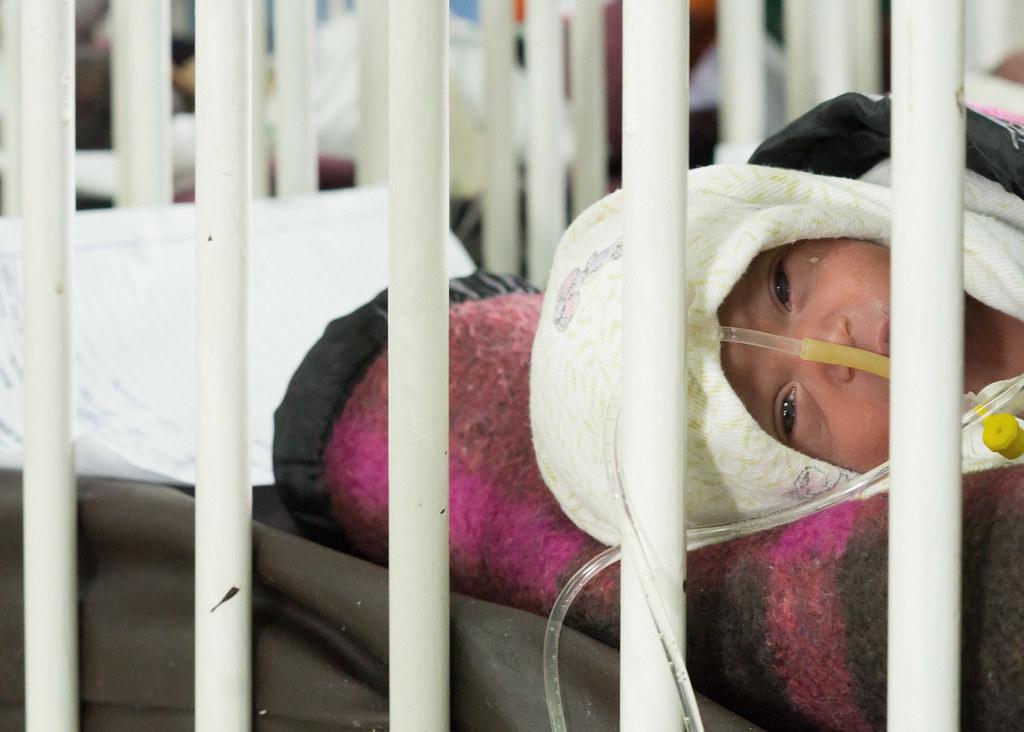A review and analysis of data from previously published studies found high levels of resistance to the antibiotics commonly used for empiric treatment of sepsis and meningitis in babies and children in the Asia-Pacific region, researchers reported today in The Lancet Regional Health–Southeast Asia.
Applying a modeling tool to antibiotic susceptibility data from 86 studies, the researchers estimated that many of the World Health Organization's (WHO's) recommended first- and second-line antibiotics for neonatal and pediatric sepsis and meningitis in 11 countries in Southeast Asia and the Pacific were less than 50% effective against the pathogens that most commonly cause these infections. Some were less than 30% effective.
The findings suggest new regimens are needed to treat children with sepsis and meningitis, which are the leading cause of neonatal and childhood mortality globally. An estimated 3 million children under the age of 5, mostly newborns in low- and middle-income countries (LMICs) in sub-Saharan Africa and Asia, died from sepsis in 2017.
"Whilst we wish to emphasise that our approach is exploratory and amounts to a first approximation, these data call into urgent question the adequacy of coverage currently provided by WHO-recommended first- and second-line antibiotic regimens," the study authors wrote.
Rising resistance threatens children, babies
For the modeling study, a team led by researchers at the University of Sydney used the susceptibility data from the 86 studies to build a weighted incidence syndromic combination antibiogram (WISCA), a method developed to estimate the likelihood that each antibiotic regimen will treat all relevant organisms for a given infectious syndrome based on the frequency of the causative pathogens and the susceptibility of those pathogens.
The aim of the study was to help inform the empiric treatment of sepsis and meningitis in the LMICs of the Asia-Pacific region, where children and newborns are particularly vulnerable to serious bacterial infections and rising antimicrobial resistance (AMR). While children would ideally be treated with targeted antibiotic therapy based on the results of blood culture and susceptibility testing, such tests are rarely available in LMICs.
“Consequently, most serious bacterial infections in neonates and children rely on empirical antibiotic therapy, guided by global policies that often fail to consider the local prevalence of causative pathogens, or increasing AMR,” the authors wrote.
And they note that evidence is mounting that the antibiotics recommended by the WHO as first-line treatment for pediatric and neonatal sepsis and meningitis—ampicillin, gentamicin, and the third-generation cephalosporins ceftriaxone and cefotaxime—are becoming increasingly ineffective because of rising resistance. That evidence includes a 2021 analysis that found extremely high rates of resistance to ampicillin and gentamicin in newborns diagnosed with sepsis in seven LMICs across Africa and South Asia.
A report published last year by the Global Antibiotic Research and Development Partnership found that hospitals in 11 LMICs were relying less on first- and second-line treatments for neonatal sepsis because of resistance, and more on last-resort antibiotics like carbapenems.
Alternative regimens needed
Using susceptibility data from 6,648 isolates included in the 86 studies, the WISCA tool estimated that, for neonatal sepsis and meningitis, the coverage provided by aminopenicillins (mainly ampicillin), gentamicin, and ceftriaxone/cefotaxime was 26%, 45%, and 29%, respectively. Carbapenems provided 81% coverage. The most frequent causes of sepsis and meningitis in newborns were Klebsiella spp. (39%) and Escherichia coli (27%).
For pediatric sepsis, which was most commonly caused by E coli (26%), Staphylococcus aureus (20%), and Streptococcus pneumoniae (13%), coverage provided by aminopenicillins was 37%, gentamicin 39%, ceftriaxone/cefotaxime 51%, and carbapenems 83%. For pediatric meningitis, the profile of pathogens was similar to that of pediatric sepsis, and coverage was 62% for aminopenicillins, 21% for gentamicin, 65% for ceftriaxone/cefotaxime, and 79% for carbapenems.
These data call into urgent question the adequacy of coverage currently provided by WHO-recommended first- and second-line antibiotic regimens.
The authors note that the data were of low microbiologic quality and largely came from urban hospitals in India and China, and therefore not necessarily representative of community-acquired infections in the region. Nonetheless, they say the findings suggest alternative empiric antibiotic recommendations for pediatric and neonatal sepsis and meningitis may be needed, and that guidance "might instead need to be stratified by region and clinical syndrome."
They also call for policy makers to make funding for new antibiotic treatments for children and newborns a priority.
"Antibiotic resistance is rising more rapidly than we realise," lead author Phoebe Williams, MBBS, MSc, of the University of Sydney's School of Public Health, said in a university press release. "We urgently need new solutions to stop invasive multidrug-resistant infections and the needless deaths of thousands of children each year."























